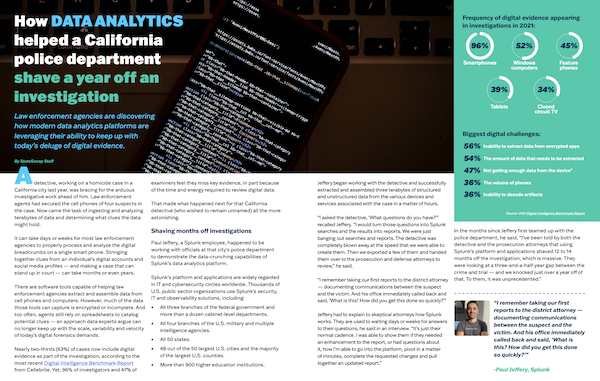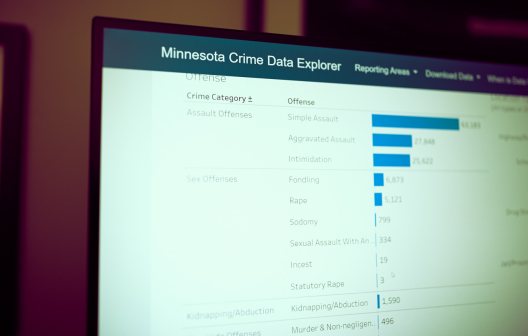- Sponsored
- County & Local
How data analytics helped a California police department shave a year off an investigation

Nearly two-thirds (63%) of law enforcement cases now include digital evidence as part of the investigation, according to recent industry figures. Yet, it can take days or weeks for investigators to properly process and analyze the digital breadcrumbs on a single smart phone. Stringing together clues from an individual’s digital accounts — and making a case that can stand up in court — can take months or even years.
That’s why detectives and attorneys in a California homicide case were stunned when they saw how rapidly a data analytics platform widely used in cybersecurity circles from Splunk was able to dramatically reduce the time it takes to search through and analyze the mountains of digital evidence investigators now face.

“I remember taking our first reports to the district attorney — documenting communications between the suspect and the victim,” recalled Paul Jeffery, a Splunk employee working with a California municipal police department. “And his office immediately called back and said, ‘What is this? How did you get this done so quickly?’”
In the months since Jeffery first teamed up with the police department, he said, “I’ve been told by both the detective and the prosecution attorneys that using Splunk’s platform and applications shaved 12 to 14 months off the investigation, which is massive. They were looking at a three-and-a-half-year gap between the crime and trial — and we knocked just over a year off of that. To them, it was unprecedented.”
Jeffery recalled the story in a newly released special report produced by StateScoop and Scoop News Group and sponsored by Splunk. The report explains how Splunk’s platform correlates data, performs advanced analytics on various data sources and applies built-in AI to quickly identify unusual behaviors or anomalies that point to criminal activities.
The technology is widely used by:
- All three branches of the federal government and more than a dozen cabinet-level departments.
- All four branches of the U.S. military and multiple intelligence agencies.
- All 50 states.
- 48 out of the 50 largest U.S. cities and the majority of the largest U.S. counties.
- More than 900 higher education institutions.
However, because law enforcement investigators haven’t traditional had direct access to Splunk’s data analytics capabilities, many are only just becoming aware of its potential to fast-track the work of sifting through vast amount of digital information associated with today’s investigations, according to Jeffery.
The report highlights examples of where Splunk’s analytics platform has already lent a significant hand in tackling a variety of criminal cases including:
- Identifying scammers engaged in defrauding the Paycheck Protection Program.
- Reviewing troves of data from disparate data sources in connection with the civil unrest in January 2021.
- Apprehending a child pornography ring operating at Florida State University.
- Identifying illegal human trafficking activity.
- Tracing the digital fingerprints tied to ransomware activity.
The report also touches on how modern data analytics platforms can help police chiefs better determine where to deploy their officers and department resources; and manage a widening array of police department data more effectively despite having limited technical capabilities and resources.
Download the full report and learn how Splunk is helping law enforcement agencies tackle the growing volume of digital forensics work.
This article was produced by Scoop News Group and StateScoop and sponsored by Splunk.





